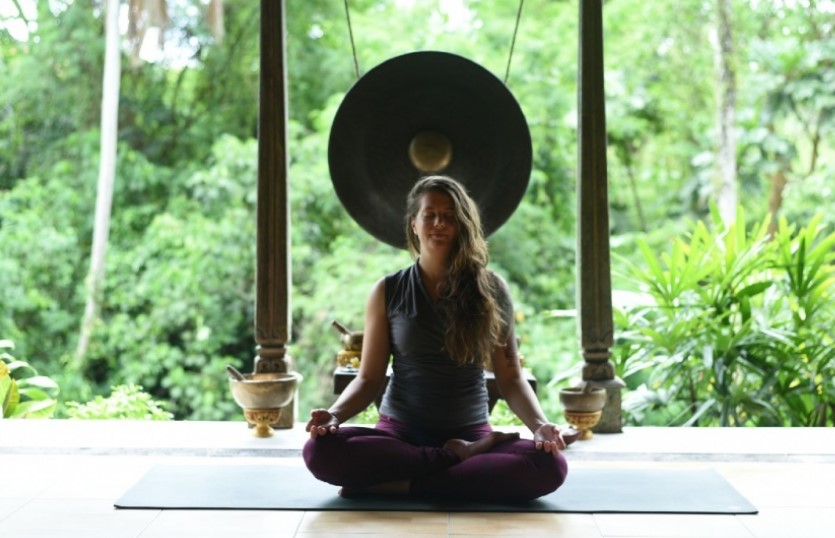Ayurveda Yoga emerges from the depths of ancient Indian wisdom, offering a unique blend of two profound practices: Ayurveda and Yoga. While Ayurveda focuses on life, health, and longevity, emphasizing balance and natural healing, Yoga provides the tools for mental and physical discipline. This blend dates back thousands of years, rooted in a time-honored tradition that views wellness as a holistic journey involving both mind and body. The essence of Ayurveda Yoga lies in its approach to achieving balance and harmony within oneself, recognizing the interconnection between our physical health, mental clarity, and the world around us.
Historical Background
Ayurveda Yoga’s roots stretch back to the Vedic period, one of the richest eras of spiritual and health-related wisdom in ancient India. This period saw the convergence of two powerful streams of knowledge: Yoga, with its origins in spiritual and ascetic practices, and Ayurveda, traditionally known as the science of life. This form of exercise emerged as a natural integration of these two paths, combining the physical and mental discipline of Yoga with the holistic health principles of Ayurveda. It’s a practice deeply connected to the rhythms of nature and the belief that our health is inextricably linked to the world we inhabit.
Principles of Ayurveda Yoga

Central to Ayurveda are the principles of balance and harmony. This ancient science teaches that health is a state of equilibrium among our body, mind, environment, and spirit. It emphasizes the prevention of illness, the rejuvenation of our body systems, and the extension of lifespan. In Ayurveda Yoga, these principles are put into practice through a personalized approach. Every individual is seen as a unique combination of the five fundamental elements—space, air, fire, water, and earth. These elements combine to form three life energies or doshas: Vata, Pitta, and Kapha. This form of exercise focuses on aligning these doshas through tailored yoga practices, breathing techniques, and dietary choices, fostering an environment where physical health and mental well-being are in perfect sync.
The Doshas

In Ayurveda, the concept of doshas is fundamental. The three doshas – Vata, Pitta, and Kapha – represent unique combinations of the five elements and are responsible for individual physiological and mental characteristics. Vata, composed of space and air, governs movement and flexibility. Pitta, a blend of fire and water, controls metabolism and digestion. Kapha, made of earth and water, is responsible for growth and stability. An imbalance in these doshas can lead to physical and mental health issues. Ayurveda Yoga addresses these imbalances by recommending specific yoga poses, breathing exercises, and dietary guidelines. For instance, grounding and calming poses are beneficial for Vata imbalances, while cooling and relaxing practices help pacify Pitta. For Kapha, stimulating and energizing activities are often recommended.
Role of Yoga in Ayurveda
Yoga, in the context of Ayurveda, extends beyond physical postures; it becomes a vital tool for maintaining and restoring the body’s balance. Integrating yoga into Ayurvedic practices offers a comprehensive approach to health and wellness. This synergy focuses on aligning physical posture, breathing, and meditation with individual health needs and constitutional types as defined by the doshas. Through specific yoga asanas (poses), pranayama (breathing exercises), and dhyana (meditation), this form of exercise addresses the unique imbalances of each individual, promoting detoxification, strengthening the immune system, enhancing digestion, and fostering mental clarity and peace. This approach emphasizes that each individual’s path to health and well-being is unique and must be tailored to their specific constitutional makeup and lifestyle.
Ayurveda Yoga Poses

In Ayurveda Yoga, certain poses are known to have specific effects on the body’s energy and balance. For instance, grounding poses like Tadasana (Mountain Pose) and Vrksasana (Tree Pose) are excellent for balancing Vata, which is characterized by movement and change. For Pitta, which is fiery and intense, cooling poses like Chandrasana (Moon Pose) and Shitali Pranayama (Cooling Breath) help regulate heat. For Kapha, known for stability and heaviness, stimulating poses like Surya Namaskar (Sun Salutation) and backbends can invigorate and energize the body. These poses not only align with specific doshas but also support overall balance, ensuring that Ayurveda Yoga practitioners can achieve a harmonious state of health.
Breathing Techniques
Pranayama, or breathing techniques, are a cornerstone of Ayurveda Yoga. These practices are essential for regulating the body’s life energy, or prana, which in turn helps balance the doshas. Techniques like Nadi Shodhana (Alternate Nostril Breathing) are known to balance Vata and Pitta, while Kapalabhati (Skull Shining Breath) can stimulate and invigorate Kapha. Pranayama practices also enhance mental focus, reduce stress, and improve respiratory efficiency, playing a crucial role in the holistic well-being of an individual.
Diet and Nutrition
Ayurveda places significant emphasis on diet and nutrition, advocating for a balanced diet tailored to an individual’s dosha. The belief is that food not only nourishes the body but also impacts mental and emotional well-being. This form of exercise encourages mindful eating practices, choosing foods that balance one’s dominant dosha. For example, Vata types benefit from warm, moist, and grounding foods, while Pitta types need cool, sweet, and bitter foods to balance their inner heat. Kapha types, on the other hand, are recommended to have light, dry, and warming foods. This approach ensures that diet becomes an integral part of maintaining health and harmony in Ayurveda Yoga.
Daily Routines (Dinacharya)

Dinacharya, the concept of a daily routine in Ayurveda, is key to maintaining balance and health. It includes practices like waking up early, cleansing rituals, yoga, meditation, and eating routines. Integrating yoga into these routines enhances their effectiveness, promoting balance at the start of the day. For instance, morning yoga can invigorate Vata, balance Pitta, and stimulate Kapha, setting a tone of harmony for the day. Similarly, evening practices can promote relaxation and prepare the body and mind for restful sleep.
Benefits of Ayurveda Yoga
Practicing Ayurveda Yoga offers a plethora of benefits, both physical and mental. Physically, it can improve strength, flexibility, and vitality. Mentally, it can lead to increased clarity, calmness, and emotional stability. There is growing scientific evidence supporting these benefits, with studies indicating improvements in stress levels, blood pressure, and overall quality of life among practitioners. The holistic approach of Ayurveda Yoga ensures that these benefits are achieved in a balanced and sustainable manner.
Precautions and Considerations
While Ayurveda Yoga is generally safe, it’s important to approach it with awareness, especially for those with specific health conditions or limitations. It’s advisable to consult a qualified practitioner who can guide you in choosing the right practices suited to your individual needs. Pregnant women, individuals with chronic health conditions, or those recovering from surgery should exercise caution and seek professional advice before beginning any new practice.
Conclusion
Ayurveda Yoga stands as a testament to the ancient wisdom of India, offering a path to holistic health and harmony. By aligning the body, mind, and spirit, this practice provides a comprehensive approach to well-being, suited to the unique needs of each individual.









